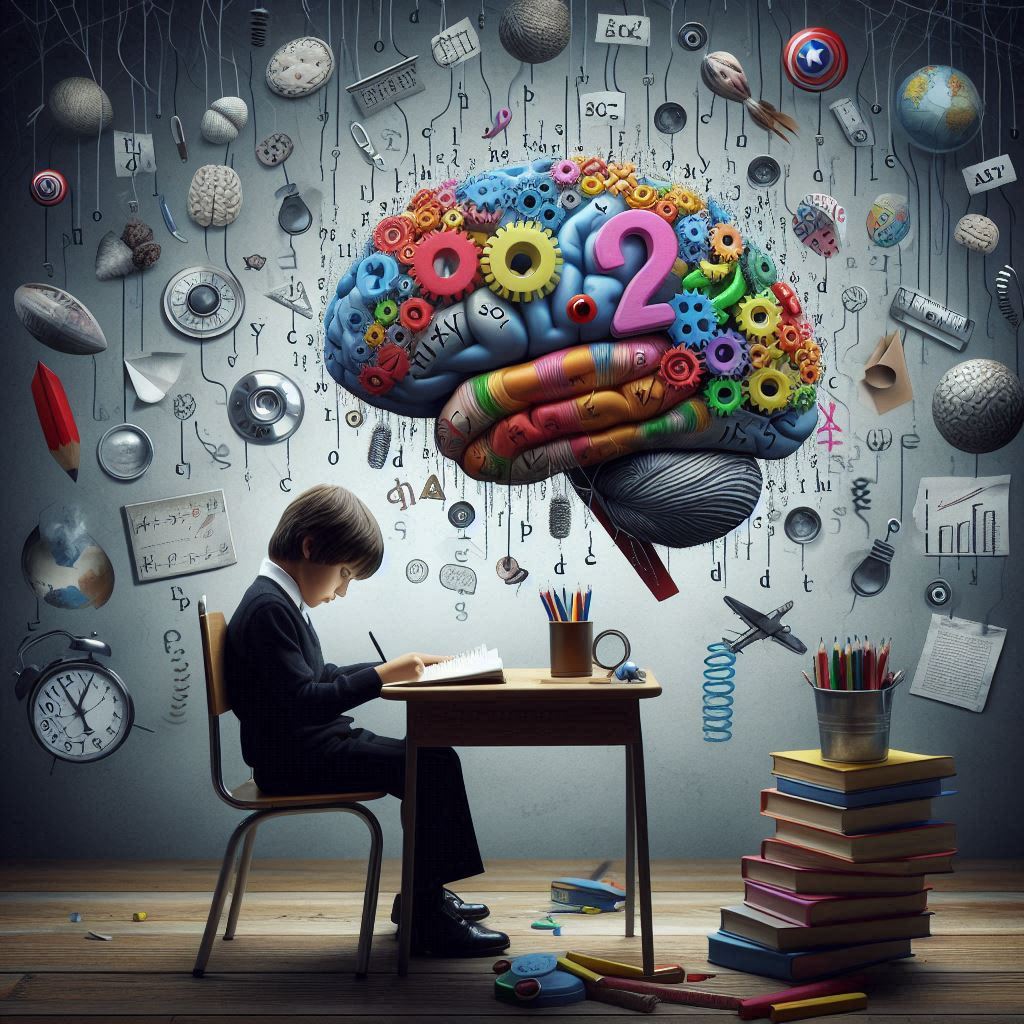Understanding Dyslexic Children: A Comprehensive Guide

Introduction
Dyslexia is a common learning disorder that affects how children process written and spoken language. Despite its prevalence, dyslexia is often misunderstood, leading to challenges in how dyslexic children are supported both at home and in educational settings. This article provides an in-depth look at dyslexia, its symptoms, impact, and strategies for supporting dyslexic children.
What is Dyslexia?
Definition
Dyslexia is a learning disability characterized by difficulties with accurate and/or fluent word recognition and by poor spelling and decoding abilities. It is a neurological condition that affects the brain’s ability to process written and spoken language, making reading and writing challenging.
How it Affects Learning
Children with dyslexia often struggle with tasks involving reading, writing, and spelling. This difficulty is not a reflection of their intelligence but rather a result of how their brain processes language. Understanding this distinction is crucial for providing appropriate support.
Symptoms of Dyslexia
Early Warning Signs
Early identification is key to managing dyslexia effectively. Symptoms in young children may include difficulty learning to read, confusion with letters and words, and problems with rhyming or following directions.
Symptoms in Different Age Groups
As children grow, dyslexia symptoms may manifest differently. School-age children might have trouble reading aloud, spelling correctly, and organizing their thoughts in writing. Adolescents and adults may face ongoing challenges with reading comprehension and written expression.
Diagnosing Dyslexia
Diagnostic Criteria
Diagnosis of dyslexia involves a comprehensive evaluation by a specialist, including a review of the child’s developmental history, educational performance, and specific language skills. Standardized tests and observations are commonly used to assess dyslexia.
Assessment Methods
Assessment methods include reading tests, spelling tests, and cognitive evaluations. These tests help differentiate dyslexia from other learning disabilities and identify the specific areas where the child struggles.
The Impact of Dyslexia
Academic Challenges
Dyslexia can significantly impact a child’s academic performance. Reading difficulties can lead to challenges in other areas of learning, affecting overall educational achievement and progress.
Emotional and Social Effects
Beyond academics, dyslexia can affect a child’s self-esteem and social interactions. Children with dyslexia may experience frustration, anxiety, and a lack of confidence, which can impact their social relationships and mental health.
Effective Strategies for Support
Early Intervention
Early intervention is crucial for helping dyslexic children succeed. This may involve specialized reading programs, one-on-one tutoring, and interventions tailored to the child’s specific needs.
Classroom Accommodations
Classroom accommodations can help level the playing field for dyslexic children. Examples include extra time for reading and writing tasks, use of audio books, and providing instructions in multiple formats.
Home Support Techniques
At home, parents can support their dyslexic children by creating a structured reading routine, using educational games that focus on language skills, and providing positive reinforcement.
Educational Approaches
Specialized Instruction Methods
Specialized instruction methods, such as phonics-based programs and multisensory teaching techniques, can help dyslexic children improve their reading and writing skills. These approaches cater to the unique learning styles of dyslexic individuals.
Use of Technology
Technology can be a valuable tool for dyslexic children. Software applications, text-to-speech tools, and other assistive technologies can help with reading and writing tasks, making learning more accessible.
Parental Involvement
Creating a Supportive Home Environment
Parents play a crucial role in supporting dyslexic children. A supportive home environment includes encouragement, patience, and a focus on the child’s strengths and interests.
Working with Schools
Collaborating with teachers and school staff is essential for ensuring that dyslexic children receive the support they need. Regular communication and involvement in the child’s educational plan can lead to better outcomes.
Building Self-Esteem
Encouraging Strengths
Focusing on a child’s strengths and achievements can boost their self-esteem. Recognizing and celebrating their successes helps build confidence and motivation.
Positive Reinforcement
Positive reinforcement, such as praise and rewards for effort and progress, encourages dyslexic children to persist in their learning and overcome challenges.
Success Stories
Notable Individuals with Dyslexia
Many successful individuals have overcome dyslexia to achieve greatness. For example, famous figures like Steven Spielberg and Agatha Christie have used their unique perspectives to excel in their fields.
How They Overcame Challenges
Understanding how these individuals managed their dyslexia can provide inspiration and practical strategies for others facing similar challenges. Their stories highlight the potential for success despite difficulties.
Myths and Misconceptions
Common Misunderstandings
There are several myths about dyslexia, such as the belief that it is caused by poor teaching or lack of effort. Addressing these misconceptions is crucial for fostering a better understanding of the condition.
Clarifying Facts
Dyslexia is not related to intelligence or effort but is a neurological condition. Clarifying these facts helps reduce stigma and promotes more effective support for dyslexic individuals.
Resources for Dyslexic Children
Recommended Books and Tools
There are many resources available for dyslexic children, including books, educational tools, and online resources designed to support their learning needs.
Support Groups and Organizations
Support groups and organizations offer valuable resources and a sense of community for dyslexic children and their families. These groups provide information, advocacy, and emotional support.
The Future of Dyslexia Research
Emerging Therapies
Ongoing research into dyslexia is leading to new therapies and interventions. Advances in neuroscience and educational techniques continue to improve the understanding and treatment of dyslexia.
Advances in Understanding
As research progresses, there is a growing understanding of dyslexia’s underlying mechanisms and how best to support individuals with this condition. These advances offer hope for more effective solutions and support strategies.
Conclusion
Understanding dyslexic children requires a comprehensive approach that considers their unique challenges and strengths. By recognizing the symptoms, implementing effective support strategies, and fostering a positive environment, we can help dyslexic children thrive both academically and personally. Dyslexia may present challenges, but with the right support, dyslexic individuals can achieve great success and lead fulfilling lives.
